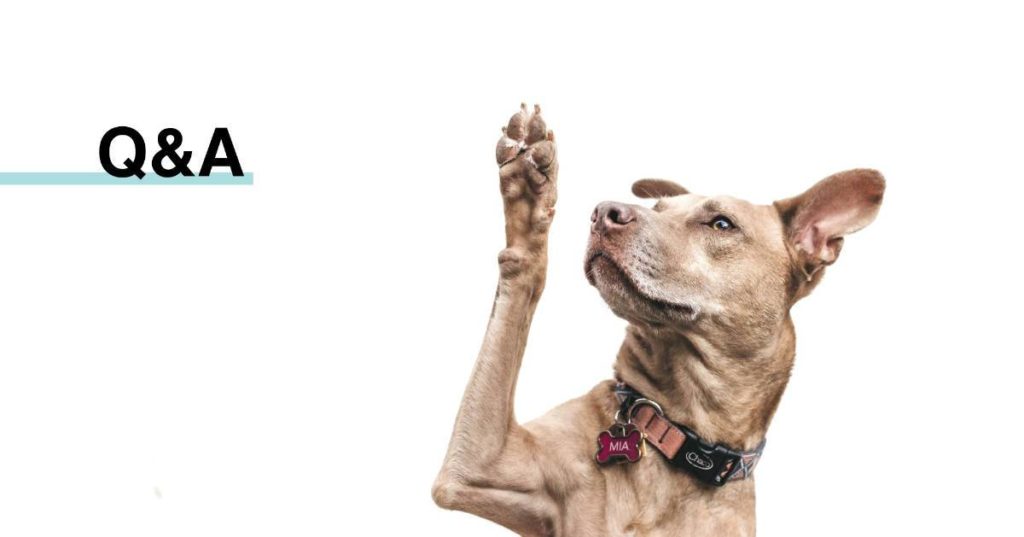You know the value of posting eye-catching, timely photos and videos to your organization’s social media accounts.
But what happens when your top advocates—who may have many times the followers—share the same content? What if you shift from sharing content on brand channels, like a megaphone, to sharing content on the accounts of all the people who love your brand, like surround sound?
Simply put, it can transform your brand.
This insight was one of the many takeaways from Greenfly’s recent webinar with Libris by Photoshelter, Tap Into the Power of Your Influencers. Kristin Twiford, Libris’ Senior Manager of Content Marketing & Brand Storytelling, and Ali Samson, Greenfly’s Director of Customer Success, hosted this lively conversation about game-changing ways to expand your social reach via your brand community. The webinar came on the heels of Greenfly’s recently announced strategic partnership with Libris to empower effortless content sharing at scale across social media.
Twiford and Samson discussed tips on identifying your brand’s influential advocates, four best practices for mobilizing them to share social content, and success stories demonstrating each of those proven approaches.
To learn more about how your organization can elevate your social strategy, watch the webinar recording here or check out our recap below.
Identify Your Brand’s All-Stars
Twiford opened the webinar by noting that the New York Yankees recently shared a photo that got over 200,000 likes on Instagram. When Aaron Judge on the team shared the same photo (above), it got even more likes and nearly double the comments. Think about the exponential reach if other players and fans shared that photo. That’s the power of sharing content with your network
As Samson noted, the way to amplify your brand’s reach is by activating that network—whatever that means to you—with relevancy and speed at the core. Every brand has a community of people to tap into for expanding audience reach. The fewer barriers in place with those audiences, the better, and the way to break down those barriers is through your advocate community.
This community could include any number of groups depending on your organization and industry, such as:
- Athletes
- Fans
- Talent and creative teams
- Ambassadors
- Influencers
- Employees and staff
- Students
- Volunteers
- Partners
It’s important to remember that one brand has one voice with limited reach. When your brand can expand this reach by tapping into many voices, the opportunity is exponential. Samson shared recent GlobalWebIndex research on worldwide internet users on social, which found that 38% follow brand accounts and 51% follow people they know. Yet, the most interesting numbers for expanding reach were found when looking beyond those groups to a variety of advocates: 34% follow musicians, 33% follow actors, 24% follow sports stars and 20% follow entrepreneurs. Enabling your community to tell your story offers more opportunities than what your brand could ever have alone.
Once you’ve identified your All-Stars, how do you activate them? Let’s take a look.

Four Best Practices and Success Stories
Samson shared her four steps for activating a brand community once you’ve identified your All-Stars, and the stories of organizations who have excelled at each of them:
1. The Big Moment
First, identify a key milestone for your brand that will require social content distribution. This could be anything from the beginning of a sports season, a new product launch or a television season premiere.
The Premier Lacrosse League (PLL) kicked off its inaugural season with a social-first, athlete-driven content strategy. The league understood that technology and the inherent reach of nearly 200 players could help its lean social team scale content. At each game during the season, PLL photographers capture photos and videos and immediately upload them into Libris. This content is auto-routed directly into curated Greenfly Galleries for each player to access immediately via the Greenfly mobile app by the time they get off the field. The players get a push notification in the app; then, they are able to peruse the photos and videos and post their favorites directly to social at the right moment for fans. In this way, they are building not only the league’s brand but their personal brands as well. Indeed, the league saw a 15% growth in the social following for players within just the first two weeks of the season.
2. The Value
Next, think about what’s in it for your brand advocate to share content on social. Give them valuable content that will enhance and build that person’s brand.
Major League Baseball (MLB) saw an opportunity to roll out social content delivery to players at scale. MLB knew that fans want to follow players, then teams, then the league. By activating nearly 500 players on Greenfly as part of the league’s Player Social Program, the success has been incredible. Players are getting higher quality, more timely content, and, therefore, what they are sharing to social is better. In fact, the league has seen an uptick of 23% in social posts, 38% in follower growth and 50% in engagement for these players.
3. The Exclusive
Offer them access to choice content as a hook. This could be a thrilling game photo when an athlete steps off the field, a sneak peek video clip for an actress to showcase her upcoming big scene, or party photos for conference attendees to enjoy throughout an event and beyond.
A premium cable network was looking to improve the process of talent content sharing, which had involved a mix of lengthy email chains, texts and links. With Greenfly, the social team has been able to quickly and efficiently onboard 18 shows, with their respective talent, into a new social sharing program. With each of these shows comes a premiere and a lot of key moments, which is important to show casts. Being able to deliver a high-quality trailer, teaser or promo at the right time in an effective way has increased the content shared to social and significantly impacted the network’s relationship with talent.
This new level of access to assets doesn’t just come in the form of a promo asset; it could be now a custom gallery for each talent to share on their social. And, those exclusives aren’t just for talent sharing, they could involve talent capturing content on-set and on the red carpet for network social channels. Giving talent an easy way to connect with content has been a huge success for the network.
4. The Relationship
Finally, think about how you can continue to move the relationship forward beyond a big moment or campaign. Build and maintain value to keep that connection strong.
A university using Libris for sports program content had its library of visual assets all organized and ready to go but with a limited ability to share them out to student-athletes. By integrating Greenfly with Libris, the university has now activated athletes and coaches across 12 sports programs, meeting the school’s goal of efficiently distributing content to athletes and coaches for social sharing. Additionally, the school wanted to gather content from select athletes and coaches for university channels, further build those relationships in one central hub for communication, and increase follower and engagement numbers on athlete and school social pages. In less than two weeks, thousands of assets were already delivered to players and coaches for social.
Importantly, there are also four years of opportunities for the school and sports teams to help these student-athletes build their brands for when they graduate. In return, the athletes’ dedication to their teams and school increases the university’s overall reach, providing a unique human and emotional connection.

Q&A
Finally, Samson fielded audience inquiries posed by Twiford about how to implement these strategies in their own organizations. Here is a sampling of those questions and responses:
How do you get influencers motivated to actually share that content? Do you have any ideas for getting people excited to share? Or do you find that people already want to share?
That’s a great question. And I think my followup question, of course, would be, who’s asking? And who’s your network? Because part of what we do here at Greenfly is to really understand who your network is from your company, and then help curate what that process might look like. In most cases, your “influencer” or “advocate” is going to be happy to share good content on your behalf because of the benefits it also provides to that individual. If we’re talking athletes, for example, especially college athletes – they are so eager to get their hands on some great content to share that just by giving them access, it’s pretty great to see how quickly and how much they’ll post. If we’re thinking about employees, that content might look different. But I think that if you’re building a brand and part of your brand is inclusion or people feeling like they’re part of something, then asking them to share on your behalf is really also a benefit to them and it makes them feel included. Depending on who your network is, that answer can look a little bit different.
One other note I’ll add is, going back to our Major League Baseball example, player Pete Alonzo was actually just quoted recently talking a little bit about his content sharing. He did touch on Greenfly, but I’ll only mention it because he talked about how valuable it is getting content from MLB, not just to post on social, which of course is the most important, but also that he now has it and he shares it with his friends, with his family. I think in particular, his mom, and that’s sort of an intrinsic value that you can give and deliver that might not get that post on social today, but it’s absolutely building a relationship with your network.
Do you see any patterns in the types of photos that brand ambassadors like to share?
Absolutely. Authentic content is key, and we’ve seen that a lot over the really stylized photos or videos that might not feel as on-brand to your advocate. And so creating and delivering something a little bit more authentic – something that’s in the moment and super relevant – will make them more likely to post on their channels. If you guys think about all of your social channels and your personal accounts, I don’t know about you, but I am less likely to post something that’s styled or delivered to me versus something that feels authentic and on-brand to who I am. As we’re thinking about what we want to share with our advocates, because they’ll want to share it themselves, it’s really what’s going to resonate with them on their social feed — and help to build their brand.
Do you have any pointers for working with content creators who don’t inherently know what’s relatable or has real value?
I’ll talk about this from two angles. The first is if we’re thinking about the brand, the company, the organization, one huge value of flowing all of this content through a system like Greenfly is the ability to track all of that content. If you are A/B testing what content is going to work well, resonate or even be posted, being able to manage that in one place has been key. If we think about a brand that is sending out an asset or ten assets out to 100 people in real time, being able to see exactly who is posting that on what channels and how many likes, views, retweets, et cetera, are coming in, in one organized place is really helpful. They can then start to quickly iterate and audit the content that they’re delivering to say, “Okay, of these ten pieces we sent out, how come 80% of our advocates posted this one, but only 20% posted this one?” And they can start to then understand what’s the right kind of content to deliver to their network.
I don’t know that there’s a catch-all answer because it’s so unique to each and every brand. But I think that ability to quickly test and iterate has been super impactful.
And then on the other side, I’ll talk more about the actual content creators here that maybe aren’t part of the brand. In addition to being able to distribute content to these advocates, there’s also, of course, a play here, especially as we’re thinking about influencers and anyone with a social following themselves, for them to create content for you. Maybe that content will also be posted on their channels, but it’s also an opportunity for you to post it on your own. If we think about some of our brands that we work with, they actually use Greenfly to send out almost a mini, very user-friendly brief. And instead of just sending an email and having a formal partnership in place, which can cause a disconnect from the actual content being created, there’s this new ability to deliver the brief in context as they’re creating whatever asset or video for them. This comes to life in a retail brand I have in mind where they send out a brief that is, laying in your specific mattress type bed, tell us a little bit about your sleep routine, why it’s important to you, et cetera, et cetera. By laying out those parameters and maybe even providing examples through Greenfly, usually, the results that come in are much more on point and that back and forth of having to ask them to create that 10, 15 more times suddenly disappears.
How do you scale this type of program for B2B companies?
It’s really about who your all-stars are. If you’re a B2B brand that has a network of employees that you think you can activate, then that’s absolutely a way that you could scale this. We work with companies across the board, and I think that specifically, as we’re thinking B2B, how can you leverage your internal employees to share content on LinkedIn? Perhaps on other social channels. And that might be for internal advocacy. That might be for HR and hiring. There’s so many different ways that you can leverage this new kind of hub and location to streamline the distribution and creation of content that it’s really not limited based on industry. It’s just understanding who those people are.
Can you think of any other fun use case examples?
We work with a recording label which created an incredible use case for Greenfly. The question was, as their artists are touring nationwide, how do they leverage the right people in the right place to capture content for them and also distribute that content? This network of people that they identified, they call their “creators.” These creators are photographers in some capacity, but they also have an interest in the music or resonate with the tour on hand. If we’re talking about a specific artist’s tour, they’re going to go for a certain subset of these creators across the various cities. What they’ll do specifically is as a show’s going to kick off in a certain city, they’ll leverage one of their creators and maybe even give them some special access. And with that special access, they can get backstage, meet the artist, do all these incredible things and capture content. And that content is being captured and automatically shared out on social for those creators. They’re super excited to share that on their Instagram or maybe on their Instagram Stories, but then they’re also delivering that content through Greenfly, back to the record label. The record label can choose how to use that in many different ways.
Join us for part two of our webinar, when we will take a deeper dive into how the Libris and Greenfly integration works. More details are coming soon; subscribe to our blog below and we’ll notify you!
Are you looking to tap into the power of your community? Contact us at Greenfly!

